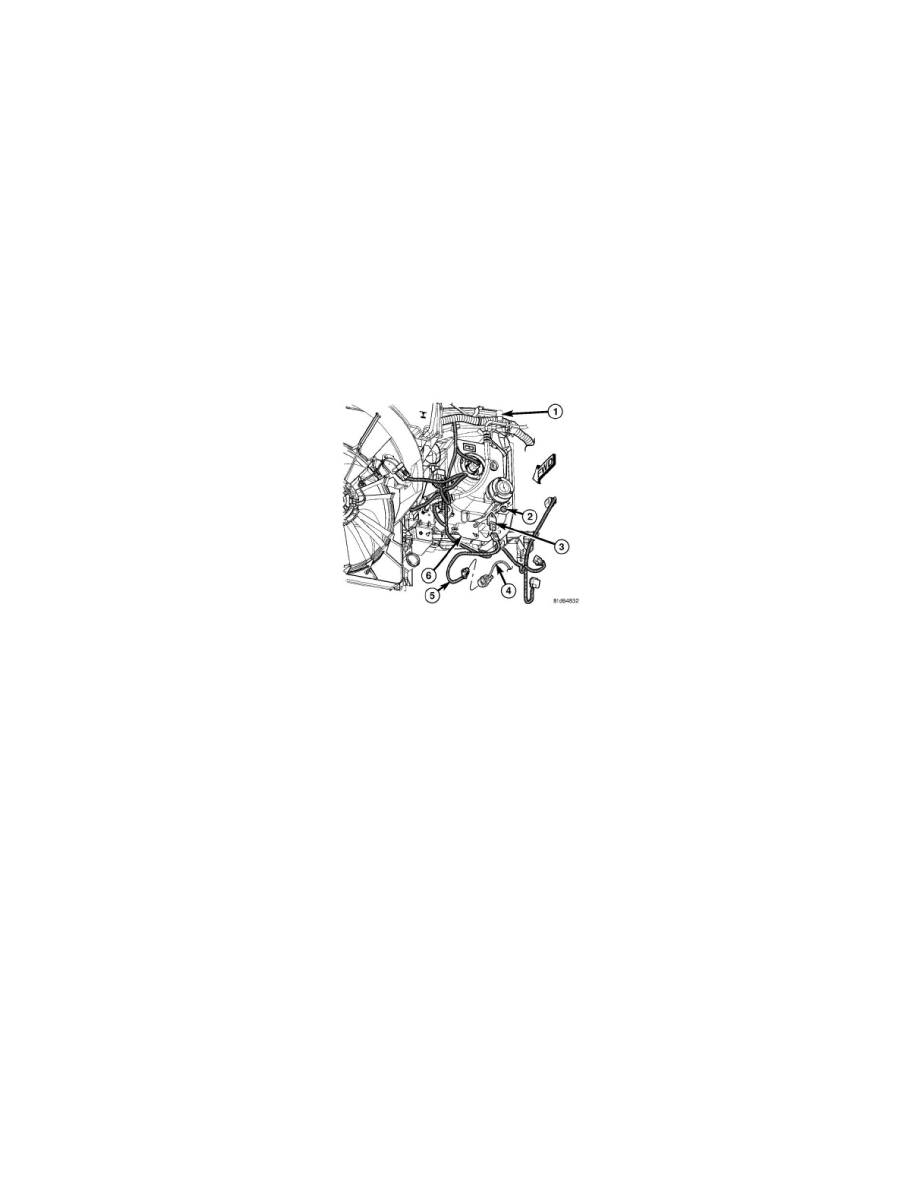Liberty 2WD V6-3.7L (2008)

Impact Sensor: Service and Repair
Installation
Front
FRONT
WARNING: To avoid serious or fatal injury on vehicles equipped with airbags, disable the Supplemental Restraint System (SRS) before
attempting any steering wheel, steering column, airbag, Occupant Classification System (OCS), seat belt tensioner, impact sensor, or
instrument panel component diagnosis or service. Disconnect and isolate the battery negative (ground) cable, then wait two minutes for the
system capacitor to discharge before performing further diagnosis or service. This is the only sure way to disable the SRS. Failure to take the
proper precautions could result in accidental airbag deployment.
WARNING: To avoid serious or fatal injury, never strike or drop the front impact sensor, as it can damage the impact sensor or affect its
calibration. The front impact sensor enables the system to deploy the front Supplemental Restraint System (SRS) components. If an impact
sensor is accidentally dropped during service, the sensor must be scrapped and replaced with a new unit. Failure to observe this warning could
result in accidental, incomplete, or improper front SRS component deployment.
NOTE: The front and side impact sensors are interchangeable.
1. Service access for the right front impact sensor is accomplished by removing the air filter housing from the engine compartment. Service access
for the left front impact sensor is accomplished by raising and supporting the vehicle, then removing the access plug from the front of the left front
wheel house liner.
2. Position the right or left front impact sensor (3) into the engine compartment.
3. Reconnect the jumper wire harness (5) to the right or left front impact sensor connector receptacle or to the body wire harness (4).
4. Position the sensor onto the stud on the bracket (6) on the back (engine compartment side) of the front end module carrier (1) below and inboard
of the front lamp unit. Be certain that the anti-rotation pin on the back of the sensor is engaged in the clearance notch of the bracket and that the
connector receptacle is pointed straight downward.
5. Install and tighten the nut (2) that secures the sensor to the stud on the bracket. Tighten the nut to 8 Nm (71 in. lbs.).
6. Do not reconnect the battery negative cable at this time. The Supplemental Restraint System (SRS) verification test procedure should be performed
following service of any SRS component. See: Powertrain Management/Computers and Control Systems/Testing and Inspection/Diagnostic
Trouble Code Tests and Associated Procedures/Verification Tests.
Side - B-Pillar
SIDE - B-PILLAR
WARNING: To avoid serious or fatal injury on vehicles equipped with airbags, disable the Supplemental Restraint System (SRS) before
attempting any steering wheel, steering column, airbag, Occupant Classification System (OCS), seat belt tensioner, impact sensor, or
instrument panel component diagnosis or service. Disconnect and isolate the battery negative (ground) cable, then wait two minutes for the
system capacitor to discharge before performing further diagnosis or service. This is the only sure way to disable the SRS. Failure to take the
proper precautions could result in accidental airbag deployment.
WARNING: To avoid serious or fatal injury, never strike or drop the side impact sensor, as it can damage the impact sensor or affect its
calibration. The side impact sensor enables the system to deploy the side Supplemental Restraint System (SRS) components. If an impact sensor
is accidentally dropped during service, the sensor must be scrapped and replaced with a new unit. Failure to observe this warning could result
in accidental, incomplete, or improper side SRS component deployment.
NOTE: The front and side impact sensors are interchangeable.
